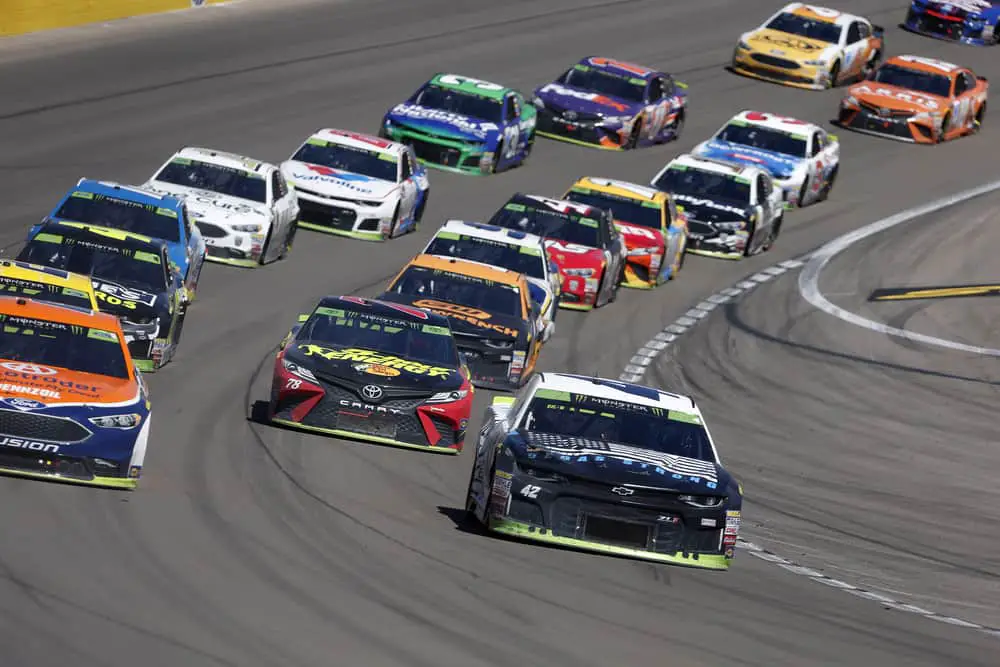As you watch a NASCAR or Formula 1 driver prepare for a race, you might see them weaving back and forth on the track. Instead of following a typical racing line, they constantly swerve from the right to the left. They don’t do it consistently but instead weave along the track during specific times of the race.
So, what’s the point? Why do race cars swerve before a race? Let’s find out.
What Is The Purpose Of Swerving Before A Race?
As race car drivers prepare for a race, spectators will often see them swerving back and forth in zig-zag motions. This may seem entirely unnecessary to some, while to others, it may seem like the driver is bored.
In actuality, there are a few reasons behind swerving before a race. Safety is critical in these races, as drivers whiz around the track at excessive speeds (often three times the typical freeway speed). So, to improve the overall safety of their vehicle and prepare it for the race, drivers need to remove marbles, warm the tires, and get rid of excess fuel that weighs them down.
Marbles
As NASCAR drivers progress through a race, their tires begin to wear out. Marbles, which are small rubber pieces that come out of the tires, can create dangerous conditions for the driver. Like glass marbles, these “marbles” create a slippery surface, potentially forcing the driver to slow down. In some cases, these marbles can cause an accident.
So, drivers swerve their cars to remove the marbles from their tires. You’ll usually see drivers swerve their vehicles when the race starts or restarts, as this helps prepare their tires by removing the small rubber bits. By weaving back and forth, the marbles dislodge from the tire, minimizing the risks associated with them.
The longer the race goes on, the more marbles there are on the track, so drivers have to proceed with caution and remain attentive to changing conditions.
The reason these tires form marbles is due to their composition. These tires aren’t your typical tires used for everyday cars driven on regular roads. Instead, they’re made of elastomers, which is a rubber compound.
As the drivers race along the track and the tires heat up, the chemical composition of these elastomers changes, causing the molecules to realign. This allows the marbles to form, creating a slippery surface.
Tire Temperature
Before racing, NASCAR drivers need to warm their tires. It’s imperative to start the race with warm tires instead of cool tires, as the latter offers less grip than the former. So, drivers swerve their vehicles before the race and during safety car situations to bring their tires to an ideal temperature.
Swerving the tires over the track creates friction, in turn creating heat to warm the tires. If the tires are too cold before starting, it could lead to a less-than-stellar start, which can impact the outcome of the race. So, by ensuring the tires are warm, drivers ensure the tires have optimum grip for the beginning of the race.
Some drivers compare driving and racing on cold tires to driving on ice, as the surface of the tire doesn’t offer enough grip with the racing surface for a stable ride.
In addition to swerving to warm the tires, drivers work on steering and braking. By incorporating these techniques, drivers heat the brakes and tires effectively.
Burn Fuel
For Formula 1 drivers, extra fuel only adds unnecessary weight. So, you might see F1 cars swerving in a zig-zag motion before a race. Doing this helps burn off excess fuel, lightening the car to the optimal weight.
Although a small amount of extra fuel might seem inconsequential, these cars are designed for maximum speed and grip. The vehicle needs to be within a specific weight range for peak performance. Even the added weight of the driver and extra fuel can affect how the car runs at optimum speeds.
Since F1 drivers know precisely how much fuel their car holds, how much it needs for the race, and how much is used through each lap, they can determine how much fuel to shed before the race. With the help of an engineering team, the driver calculates how much fuel to shed before the race to effectively reduce the car’s weight within reason.
Are All NASCAR Tires The Same?
There are three types of tires in NASCAR’s lineup: asphalt/concrete, rain, and dirt. Each option serves a purpose and is designed for use on a specific track material.
For example, although NASCAR has wet tires, they rarely use them during races. However, there are some categories that employ wet conditions for racing, including Formula 1 and the 24 Hours of Le Mans. Since NASCAR primarily uses slick tires (tires without treads) for racing on asphalt or concrete, racing in the rain or otherwise wet conditions can be hazardous, as these tires are incredibly slippery.
So, while NASCAR won’t use these particular tires for racing in wet conditions, they can use rain tires. These tires have treads and are safer than slick tires when used in rainy or wet conscious. Even still, NASCAR usually suspends races when impending rain could make the track hazardous.


